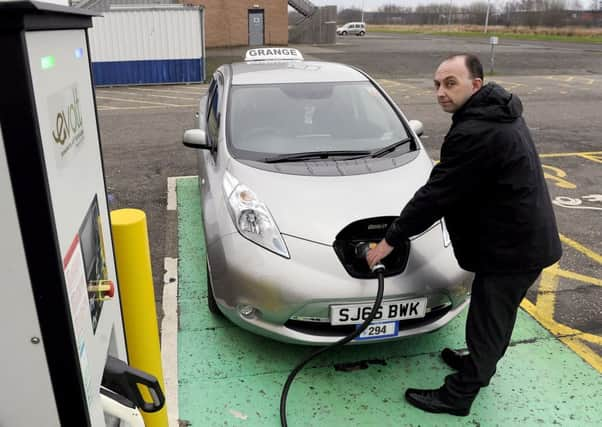Mark Flynn: Weaning the world from its love affair with oil
This article contains affiliate links. We may earn a small commission on items purchased through this article, but that does not affect our editorial judgement.


Oil markets have struggled for direction since rebounding from the lows plumbed in the first half of last year. Opec is clearly trying to do its bit on the supply side, with the increasingly evident global economic pep helping on the other. However, prices seemingly remain locked in range; what gives?
For our part, we do see oil prices drifting higher towards the end of the year as a better balance between demand and supply sees increasing draws on inventories. Improving global demand is part of that story, as is the recent extended Opec supply agreement.
Advertisement
Hide AdAdvertisement
Hide AdHowever, in the absence of a major supply shock, we are not expecting a return to $100 (or anywhere close to it) any time soon. The new reality in the oil industry seems to be one of dramatically reduced costs. This is allowing many more producers to make money at levels unthinkable just a few years ago, suggesting that the oil market will remain well supplied for the foreseeable future, even if industry costs should start to creep up again.
There are also some interesting long-term challenges now gaining a bit more credibility. Whereas the industry chatter since at least the 1950s has centred on the concept of “peak oil” – the idea that finite resources will surely be exhausted before long – the debate now seems to be turning towards “peak demand” – an idea best summed up by the now infamous comment from former Saudi Arabian oil minister, Sheikh Zaki Yamani: “the Stone Age came to an end not for a lack of stones, and the Oil Age will end, but not for a lack of oil.”
As the IMF observed in a recent report, a demand-driven abandonment of oil would not be unprecedented. The US energy and fuel mix went through two dramatic changes, unrelated to supply scarcity, in the century from 1850, as coal toppled wood and then oil and gas did for coal in reasonably rapid succession. This rise of oil in the early 20th century came largely as a result of a transportation revolution as horses were swapped for cars. Many argue that it will again be a transportation revolution, in the form of the move to electric cars, that will help speed an eventual transition away from oil.
Between 1905 and 1915, the ownership of horses per thousand people in the US fell by around 30 per cent. In the following 15 years, horse ownership fell by a further 90 per cent. If, starting in 2017, car displacement follows the same pattern, 90 per cent of the US market could be electric vehicles (EV) in little over 20 years. This is obviously way in excess of current consensus expectations, which tend to be based on extrapolations of current trends in EV adoption and battery cost reduction. In their 2016 outlook, Opec themselves predicted only 22 per cent alternative fuel cars worldwide by 2040.
Much of this scepticism of EV’s potential is eerily reminiscent of the early days of the cell phone market. In the early 1980s, McKinsey produced a report for AT&T on the market’s potential. The report identified major hurdles to cell phone adoption, citing the bulkiness of the handsets, short duration of the battery charge, high cost per minute and lack of coverage. The report predicted a market of 900,000 cell phones by 2000. The actual number turned out to be 120 times larger than forecast at 109 million phones.
Advertisement
Hide AdAdvertisement
Hide AdThe McKinsey report serves to remind us of how limited the view of the road ahead has always been to even the most assiduous of forecasters. In a sense, this makes picking out the long-term winners from the evolution and adoption of new technologies a very hazardous game, particularly if played beyond the confines of a diversified portfolio.
Even betting hard on the surely obvious losers, such as those engaged in oil exploration and production in this example, can prove tricky too. For those who would doubt the adaptability of these profit-seeking institutions, the history of some of today’s most successful companies is instructive. WPP, for instance, now a British advertising giant, started life in 1971 as Wire and Plastic Products plc, manufacturing wire shopping baskets.
More broadly though, the continuing prospects for such technological leaps are a large part of why we urge clients to always have some skin in this game. Certain geographies and sectors will inevitably and unfortunately endure disruption, but the world in aggregate tends to benefit, something that is eventually reflected in aggregate corporate earnings and therefore share prices.
In the short term, the sharp changes in the oil industry’s cost curve and the dampening effect that has on our outlook for oil prices leads us to call time on our moderate overweight to the energy sector in the developed world. We use the proceeds to reduce our strong underweight in consumer staples across the developed world to a more modest negative position.